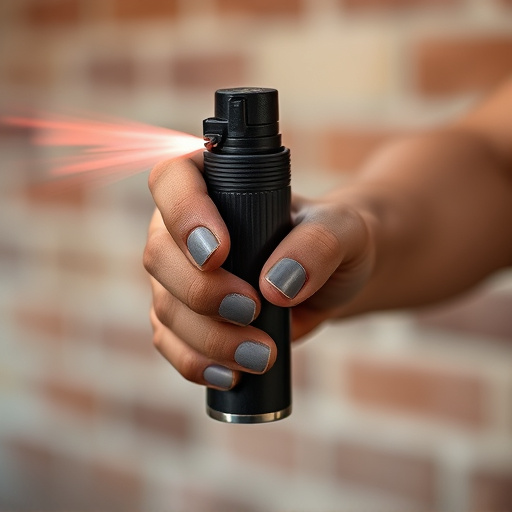To maintain pepper spray effectiveness and safety, store it between 50°F and 70°F (10°C to 21°C) in cool, dry conditions. Avoid extreme heat or cold, direct sunlight, and humid environments. Select sprays with suitable concentration levels for your needs, prioritizing ease of deployment, weather resistance, and ergonomic design. Store in a cool, dark place like a locked drawer or cabinet to ensure longevity and reliability.
Defensive spray is a powerful tool for civilian self-defense, offering a non-lethal means to deter and disable attackers. This comprehensive guide explores the effectiveness of pepper spray, guiding users through choosing the right type for their needs and highlighting crucial storage practices. We delve into active ingredients, factors influencing performance, and optimal storage conditions, including ideal best storage temperature for pepper spray to maximize longevity. By the end, you’ll be equipped with knowledge to make informed decisions for your safety.
- Understanding Pepper Spray: Active Ingredients and Effectiveness
- Choosing the Right Pepper Spray for Your Needs: Factors to Consider
- Optimal Storage Conditions: Ensuring the Longevity of Your Self-Defense Tool
Understanding Pepper Spray: Active Ingredients and Effectiveness
Pepper spray, also known as oleoresin capsicum (OC) spray, is a popular self-defense tool for civilians due to its non-lethal nature and effectiveness in deterring potential attackers. The active ingredient in pepper spray is capsaicin, which is derived from chili peppers. This compound irritates the eyes, nose, and respiratory system, causing temporary disorientation and pain, allowing users to escape or seek help.
When considering the best storage temperature for pepper spray, it’s essential to maintain conditions that ensure its potency and safety. Typically, Pepper spray should be stored in a cool, dry place with a temperature between 50°F and 70°F (10°C to 21°C). Exposing pepper spray to extreme heat or cold can degrade its active ingredients, reducing its effectiveness. Proper storage is crucial not only for optimal performance but also to comply with legal requirements regarding the handling and retention of self-defense devices like pepper spray.
Choosing the Right Pepper Spray for Your Needs: Factors to Consider
When selecting a defensive spray, understanding your specific needs and environment is crucial. Consider factors such as range, strength, and duration of effectiveness. Pepper sprays vary in capsaicin concentration, measured in percent, which determines its heat and pain level. For close-quarters self-defense, opt for a spray with a higher percentage (up to 2%) for maximum impact. If you require a longer reach, choose one with a lower concentration (1-1.5%) as it will provide more distance and control.
The best storage temperature for pepper spray is typically between 50°F to 70°F (10°C to 21°C). Extreme temperatures can affect its performance and shelf life. Avoid leaving it in direct sunlight or freezing conditions. Ensure you store your spray in a secure, inaccessible location to prevent unauthorized use and keep it readily available when needed. Consider factors like ease of deployment, weather resistance, and ergonomic design for comfort during use.
Optimal Storage Conditions: Ensuring the Longevity of Your Self-Defense Tool
To ensure the longevity and optimal performance of your defensive spray, proper storage conditions are paramount. The best storage temperature for pepper spray typically ranges between 50°F to 72°F (10°C to 22°C). Extreme temperatures can degrade the effectiveness of the spray, so it’s crucial to avoid storing it in direct sunlight or near heat sources like radiators or ovens. Similarly, keeping defensive spray in a constantly humid environment can cause the canister to corrode and leak.
Humidity control is another critical aspect. Ideal humidity levels for storage should be maintained between 40-60% to prevent both moisture buildup and excessive drying out of the spray mechanism. Storing your self-defense tool in a cool, dry, and dark place—like a locked drawer or cabinet—will help maintain these optimal conditions, ensuring that when you need it most, your defensive spray will work as intended.
In conclusion, defensive spray is a valuable tool for civilian self-protection. By understanding its active ingredients, choosing the right fit for your needs, and storing it optimally (ideally between 50-70°F or 10-21°C), you can ensure its effectiveness and longevity. Armed with this knowledge, folks can confidently navigate potential threats, fostering a sense of safety and security in today’s world.
